Ferrari Interactive Experience
Phygital Experience
TECHNOLOGY HIDDEN EMPOWERMENT – The visual and emotional contact between object and person is never altered by technology but the relationship is amplified by creating a correspondence between the gestures and what happens in the surrounding environment.
In the phase of detecting the human presence it is also possible to generate conditioned contents based on Artificial Intelligence and cognitive Machine Learning, for example by providing differentiated contents based on the anthropological characteristics of the users (age / gender).
Concept
The experience is installed inside Ferrari Design Center at Maranello and only approved customers can book a meeting and have a guided tour. The tour duration is an hous and a half and it includes production department and Design Center where the customer/s can see the latest Ferrari model or the one they booked previously. The idea was to add a bit of ”magic” to the overall Ferrari experience. Using technology hidden empowerment principle, we created the experience that includes surprising effect and brings additional information for all the present Ferrari fans.
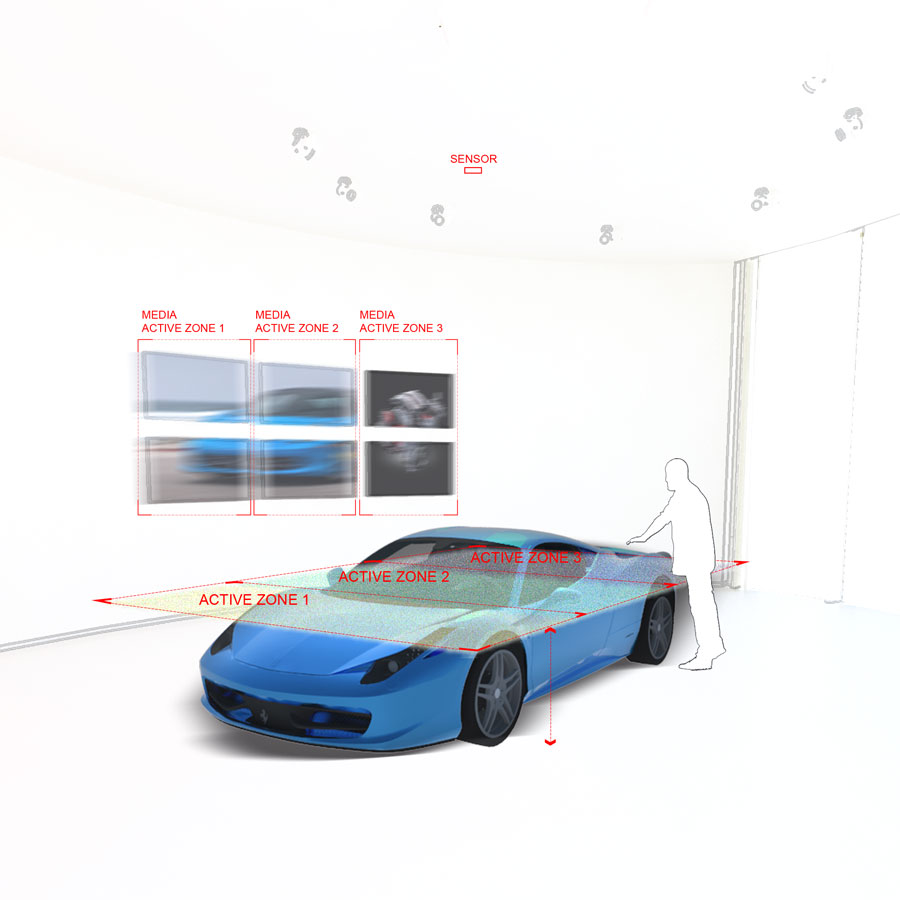
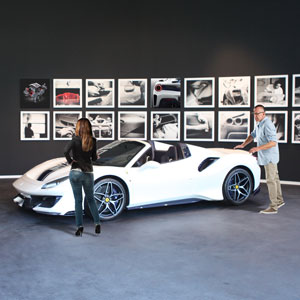
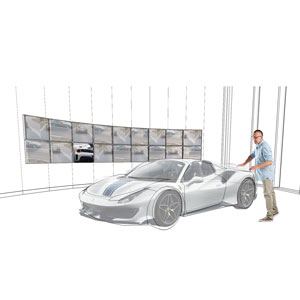
User Experience
The car is ”devided” in 3 sensible zones – rear, center and back. Placing the hand above any of these parts (without touching the car), the sensor registers the movement, so the pc launches the content connected to it (video or images) to the selected part on the corresponding screen.
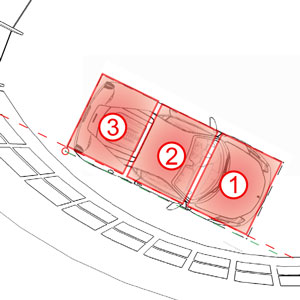
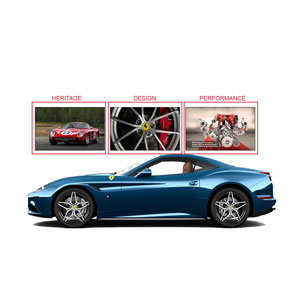
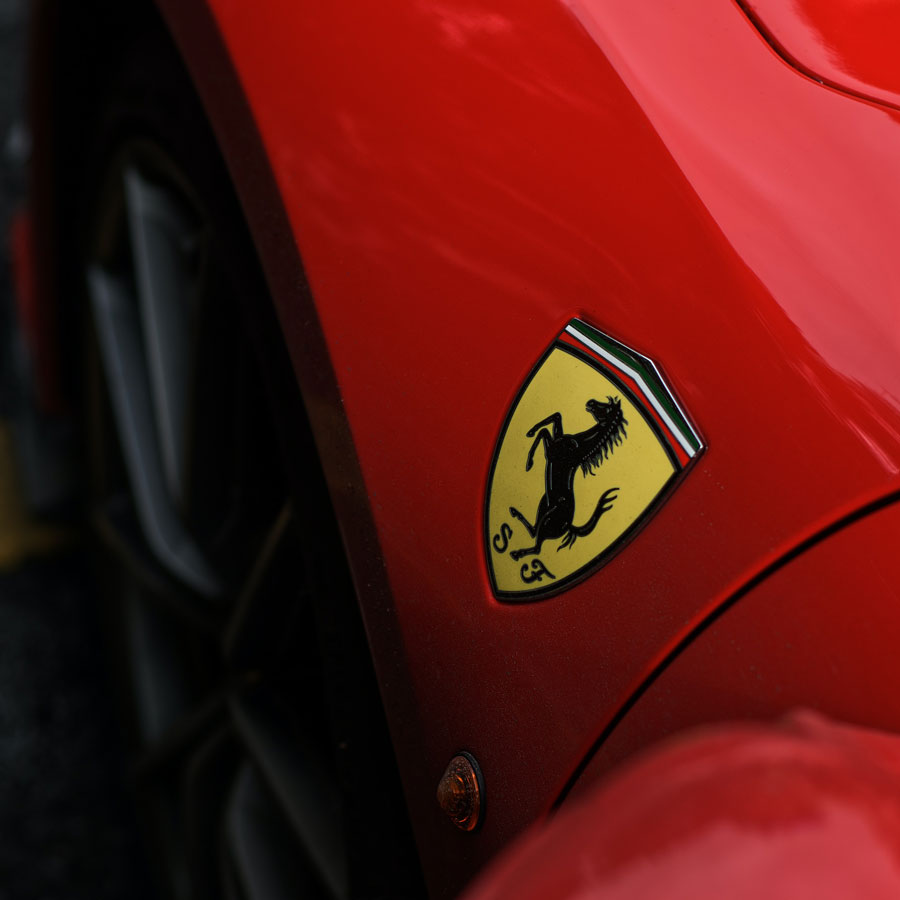
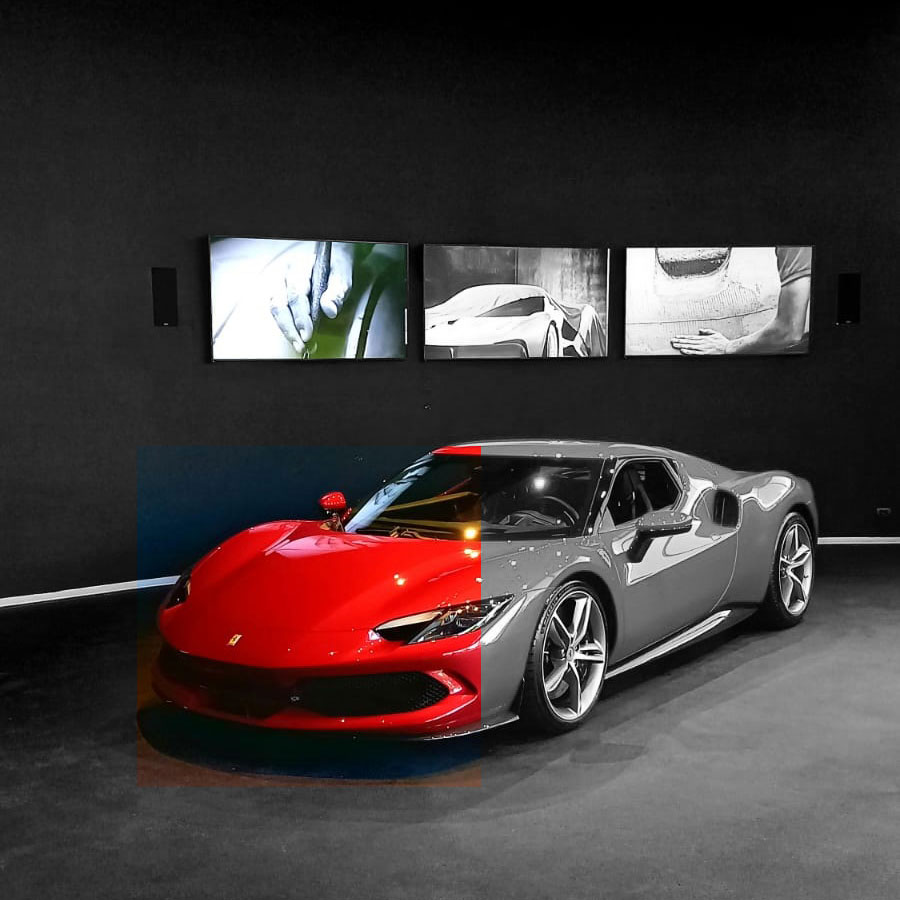
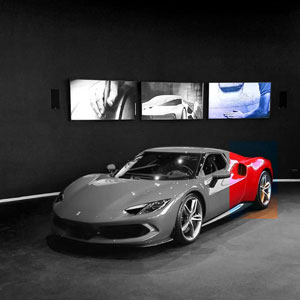
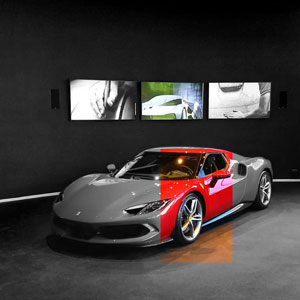
Visual Displays placement design
Important part of the experience is also visual display placement. At the moment, the only solid wall in the Design Center (the rest is glass) was covered with Ferrari historical images, so we created a study of screen postioning according to existing layout.
The first proposal includes 6 45 inches full HD monitors where each of the three experiences is visually divided in two parts.
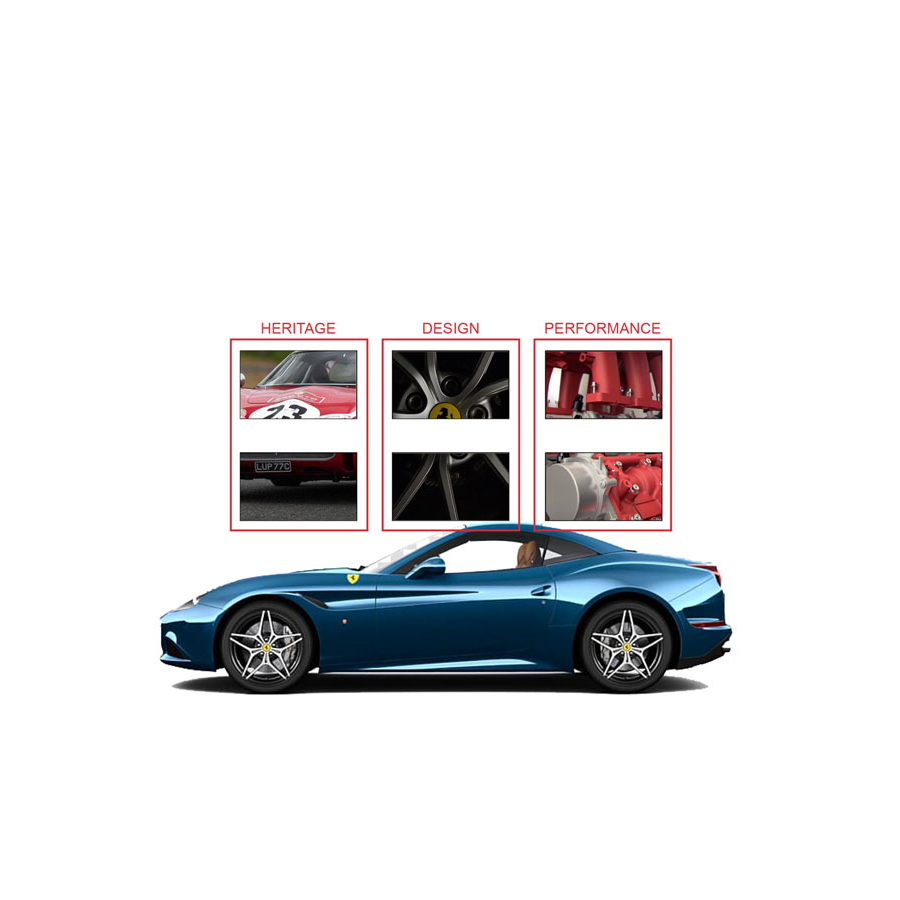
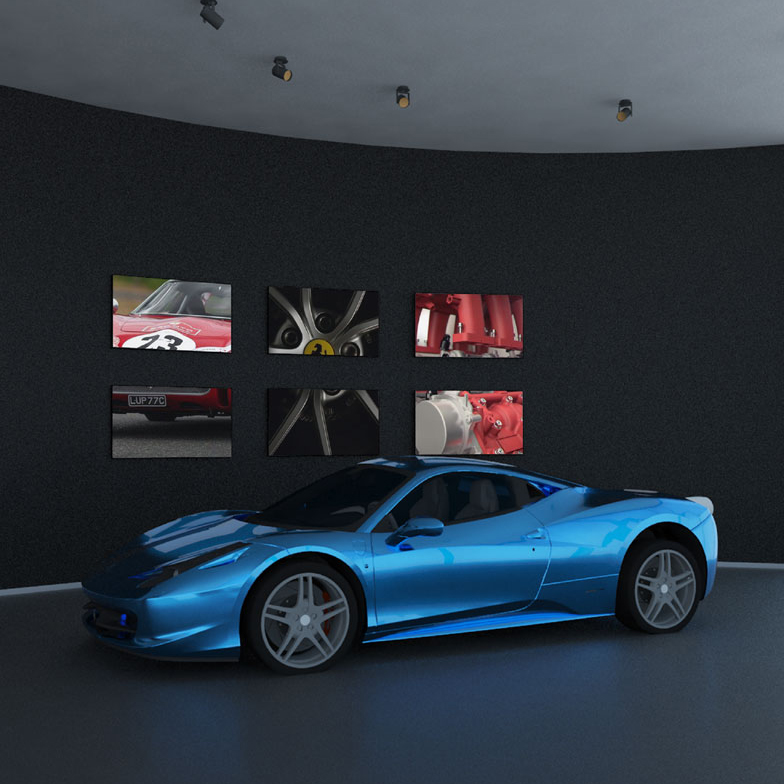
The second and also selected one includes 3 55 inches full HD monitors where each one dedicated to one experience. This option is selected because it has a major impact of users which we studied before coming up with a decision.
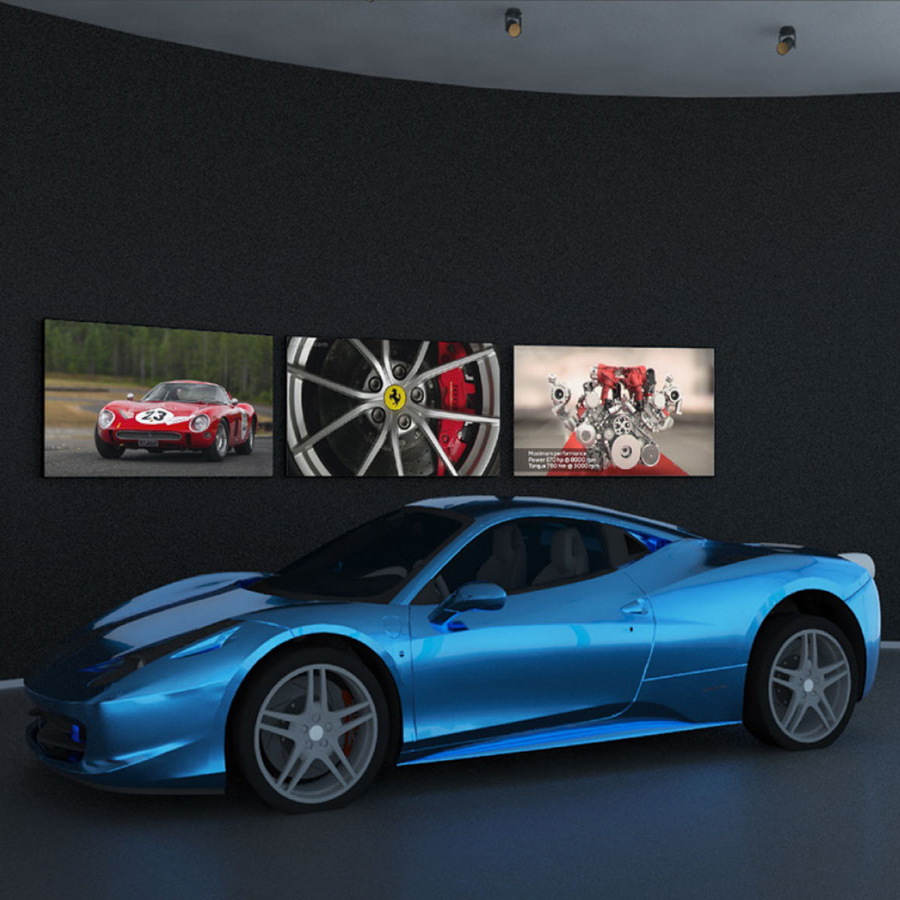

With the third proposal we wanted to combine the existing analogical visuals (photos on the wall) with digital once, using 6 45 inches HD monitors, but after experimenting, we realized that it becomes to complicated for users to understand the connections between the car parts and the visuals.
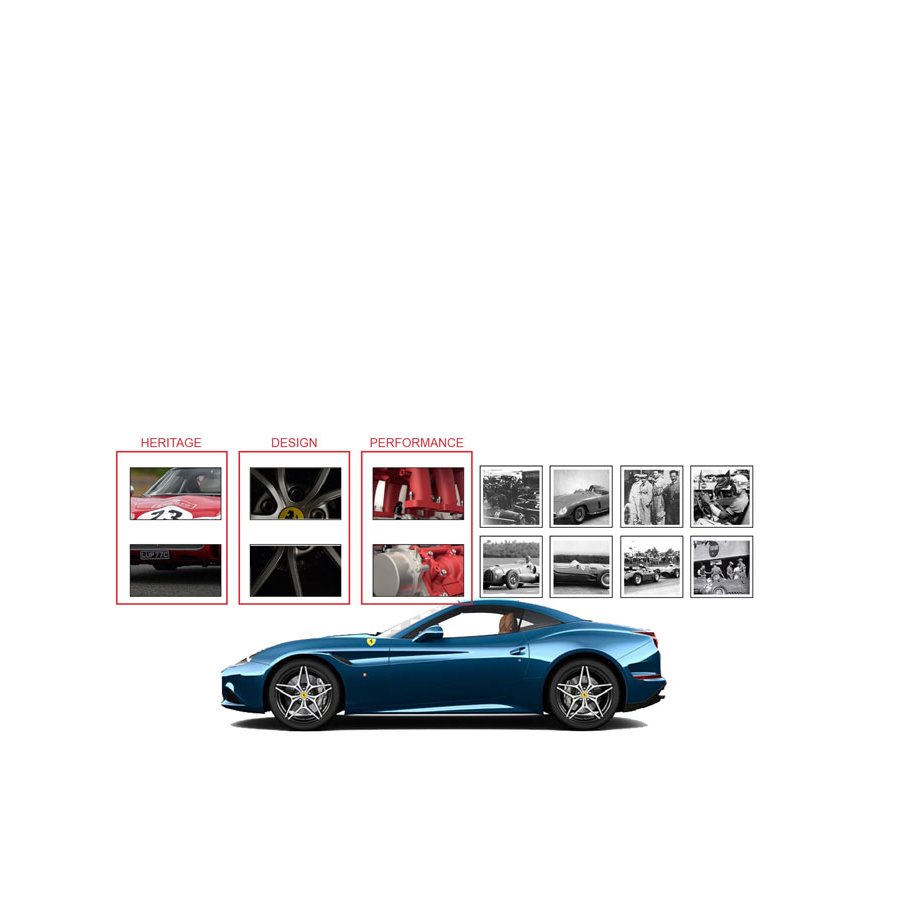
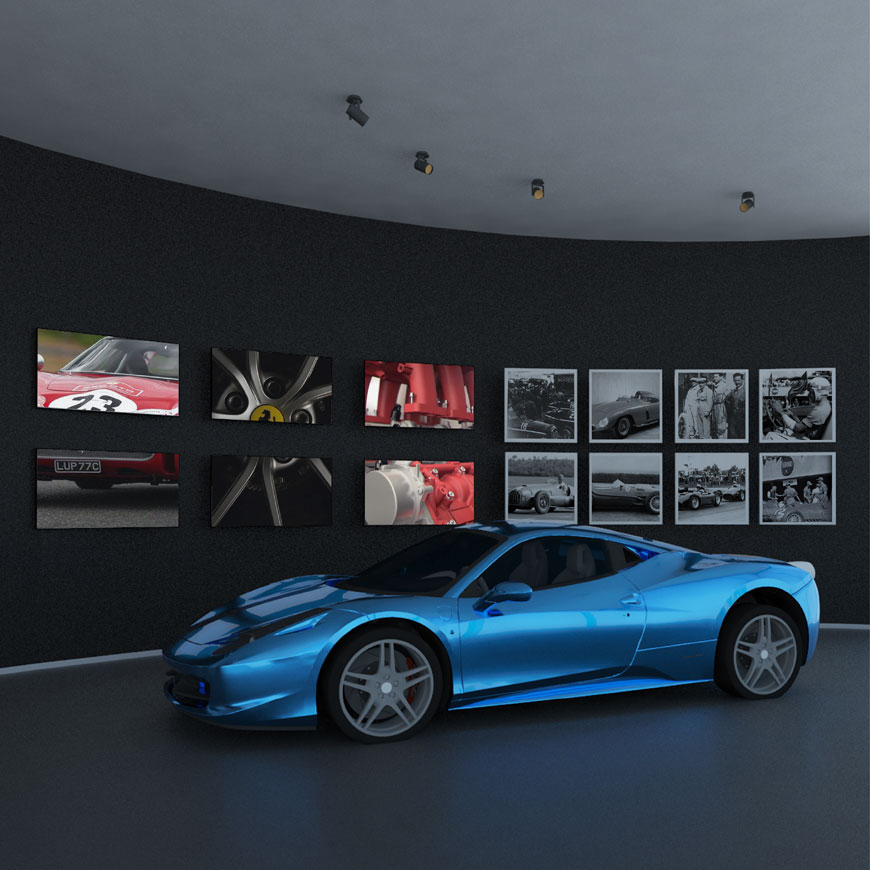
The last proposal is similar to the selected one but in this case the screens are vertical. The tests showed the bigger impact of horizontally positioned screens.
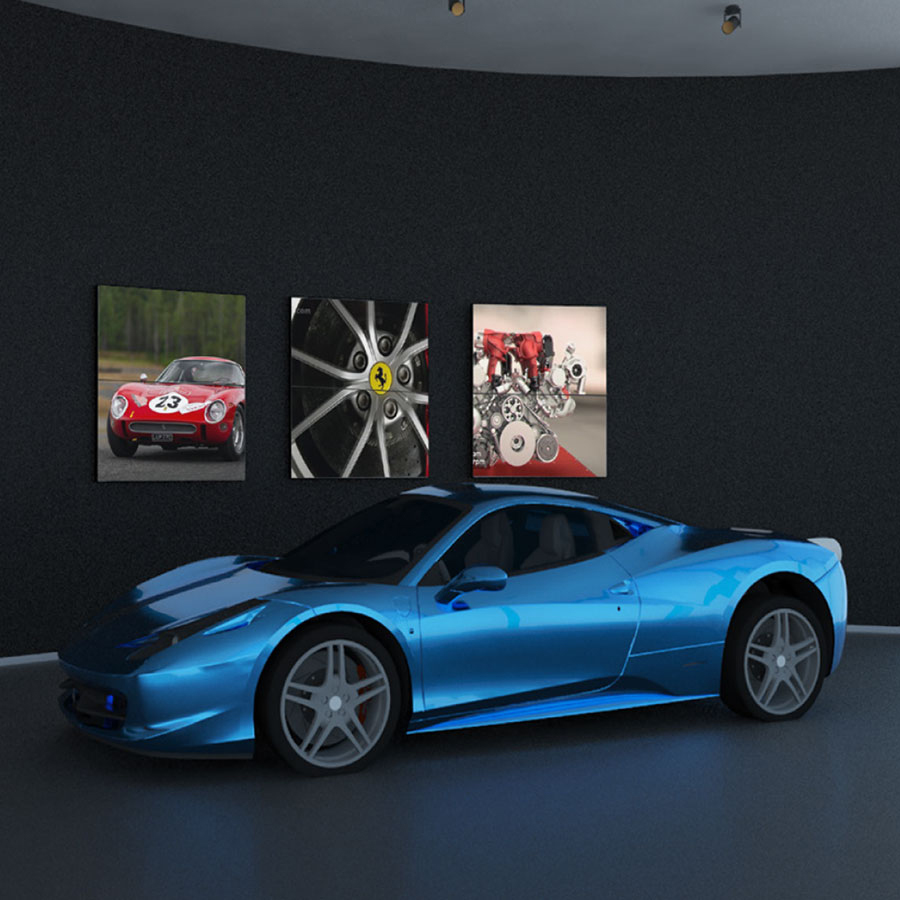
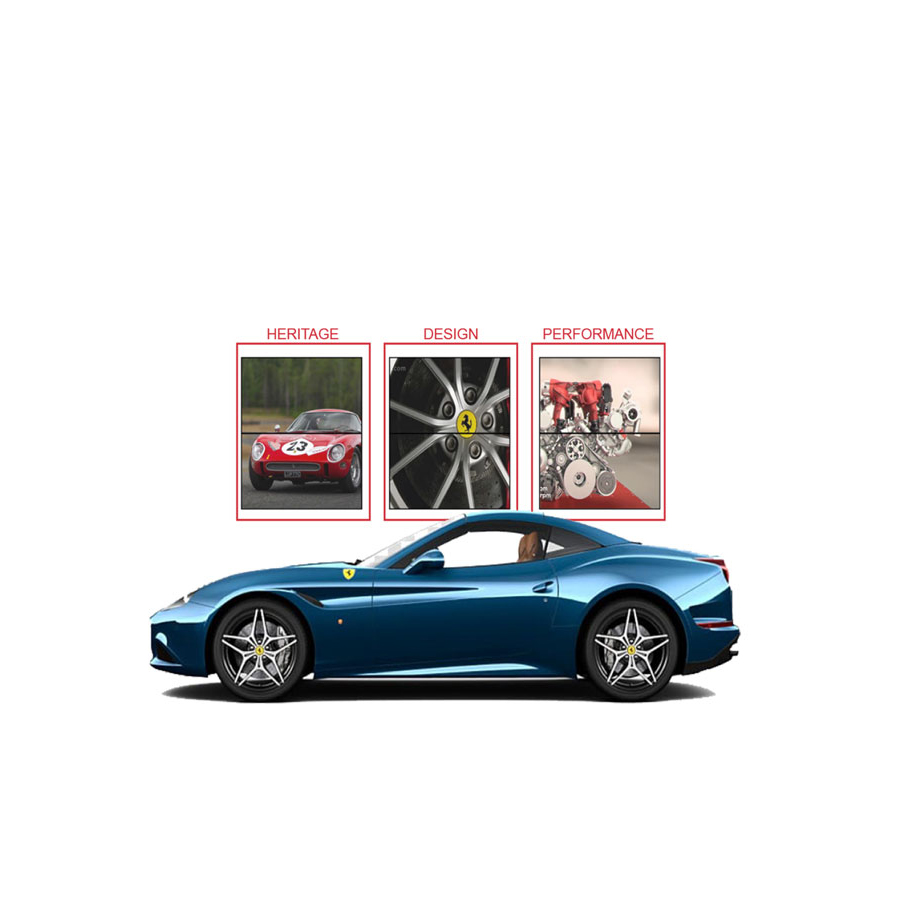
And here the magic happens…